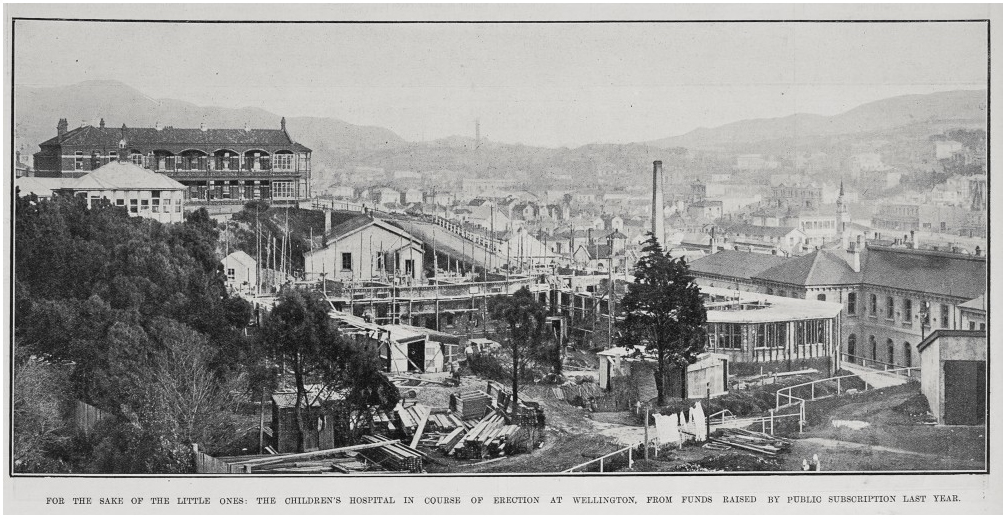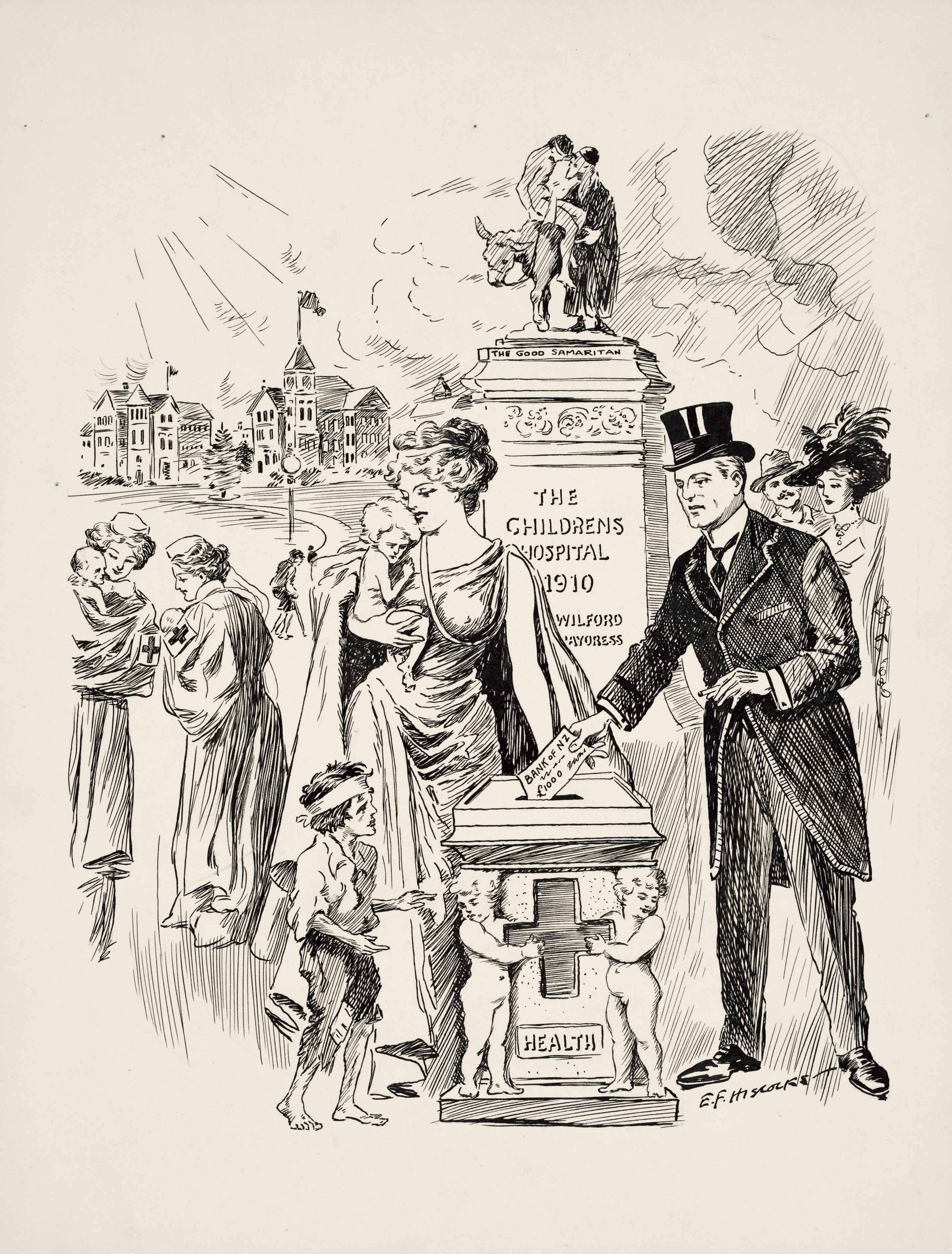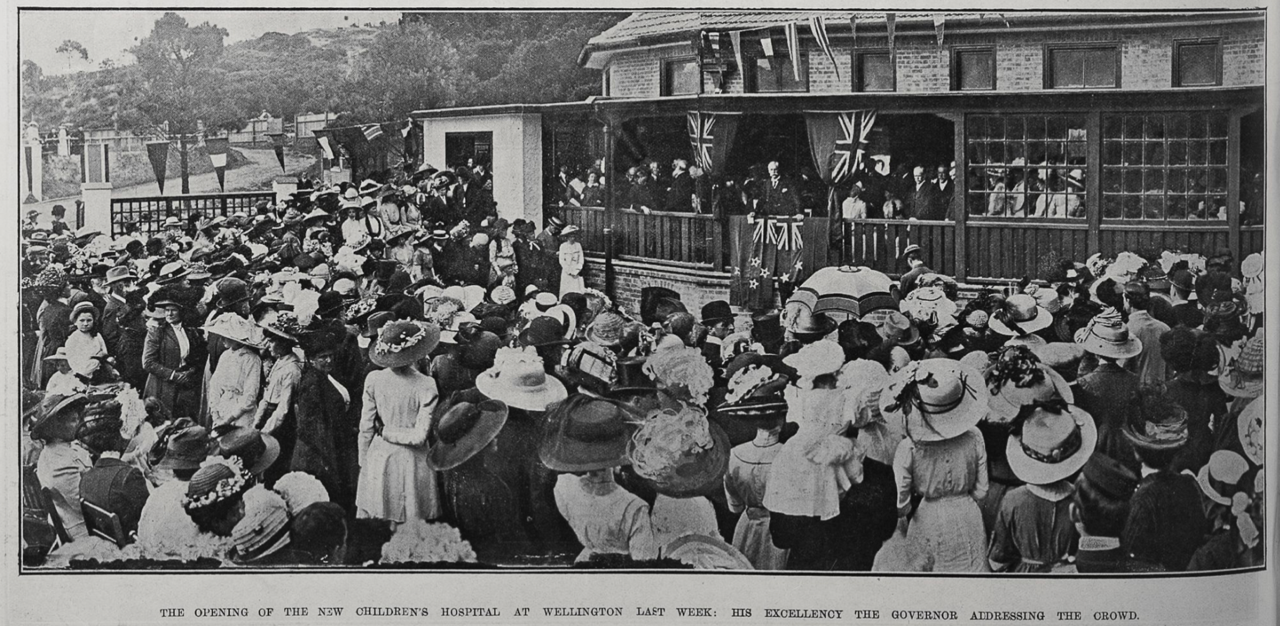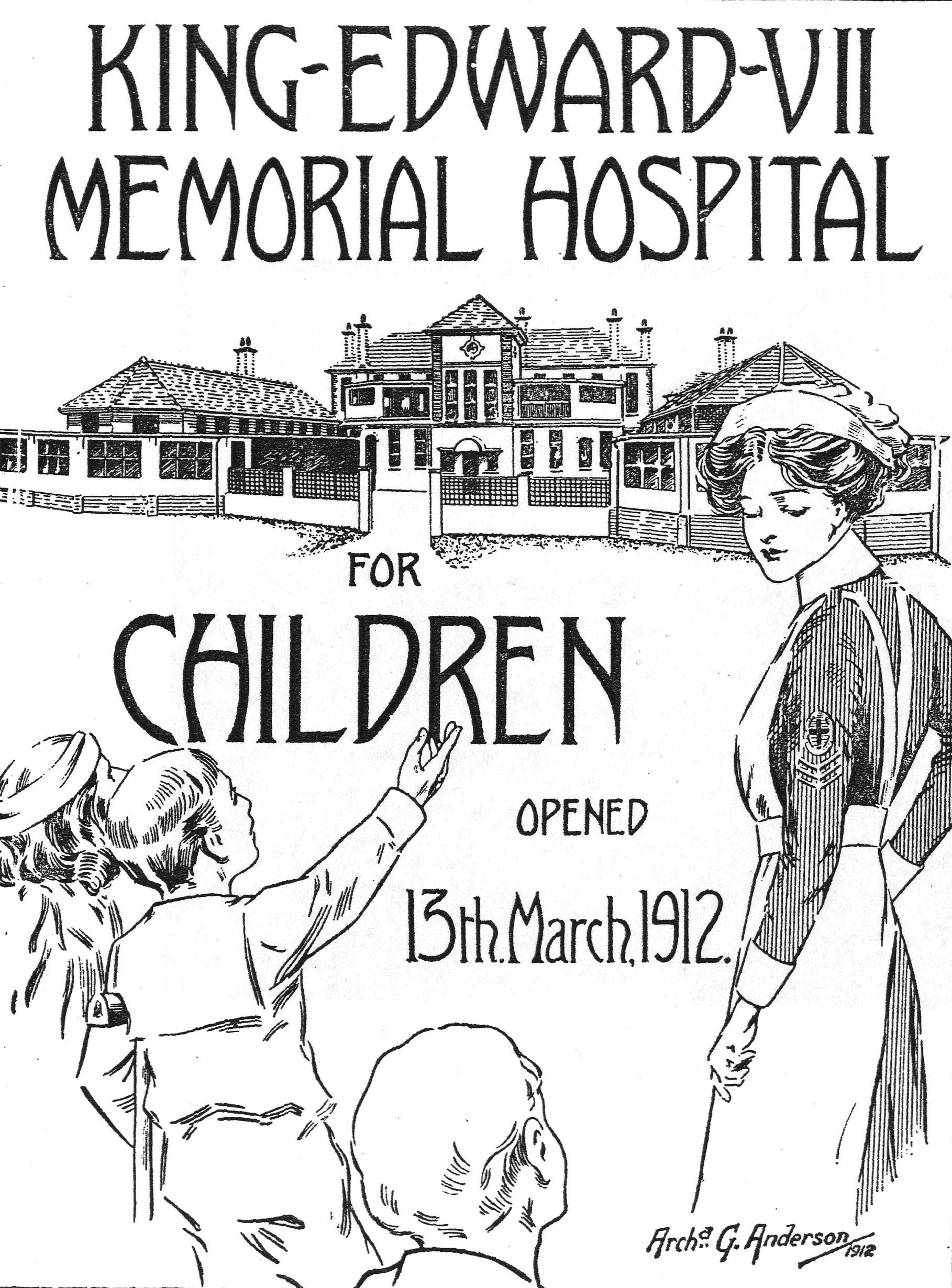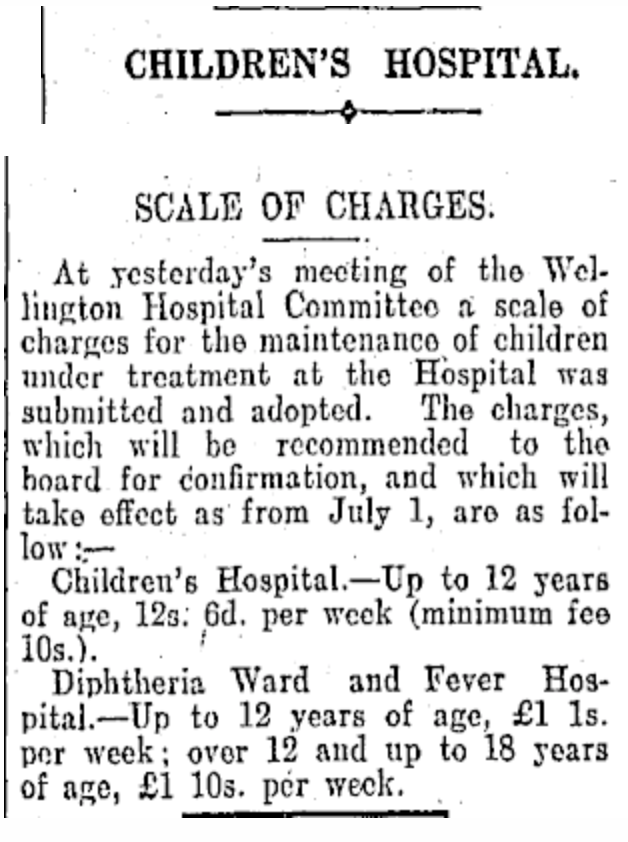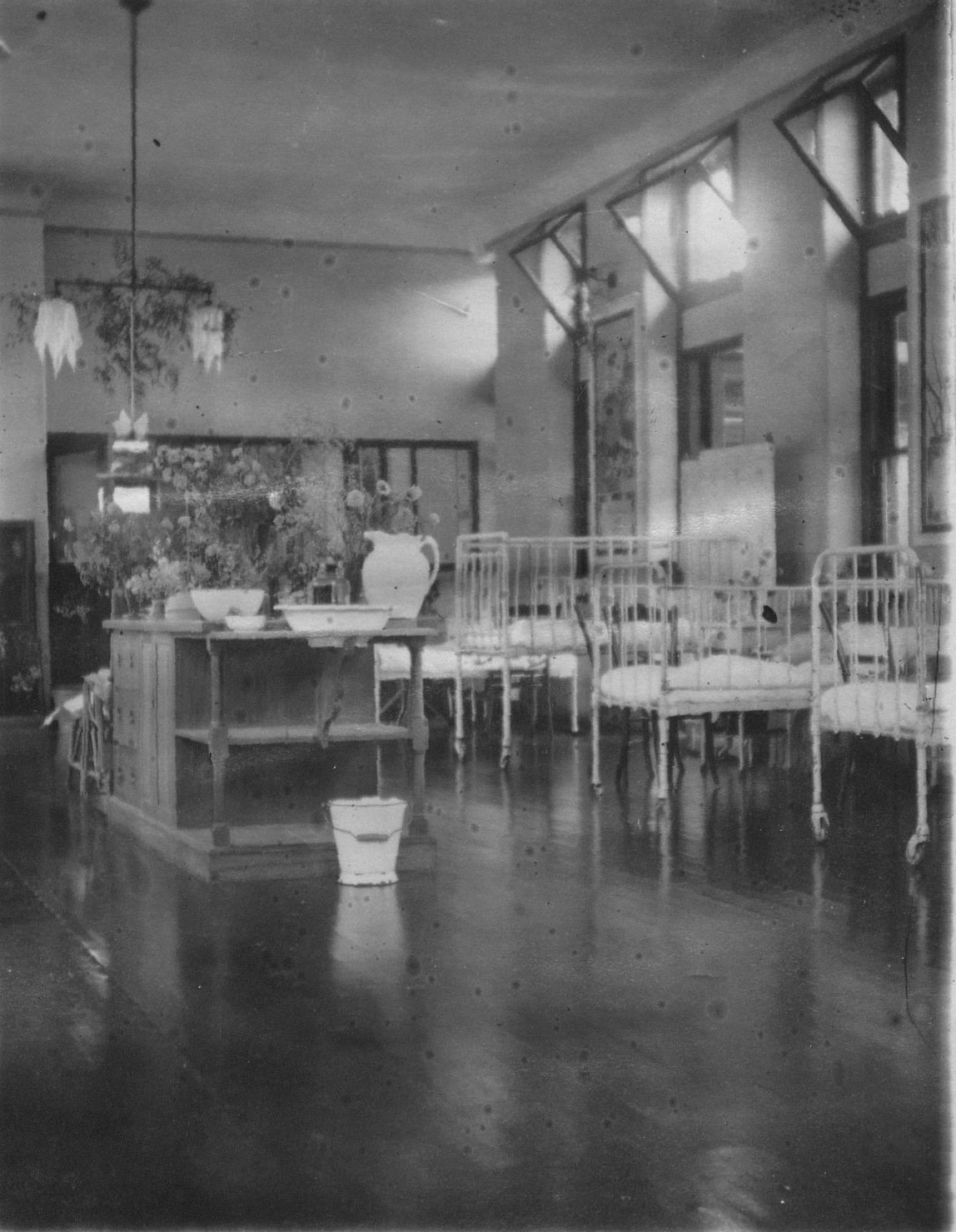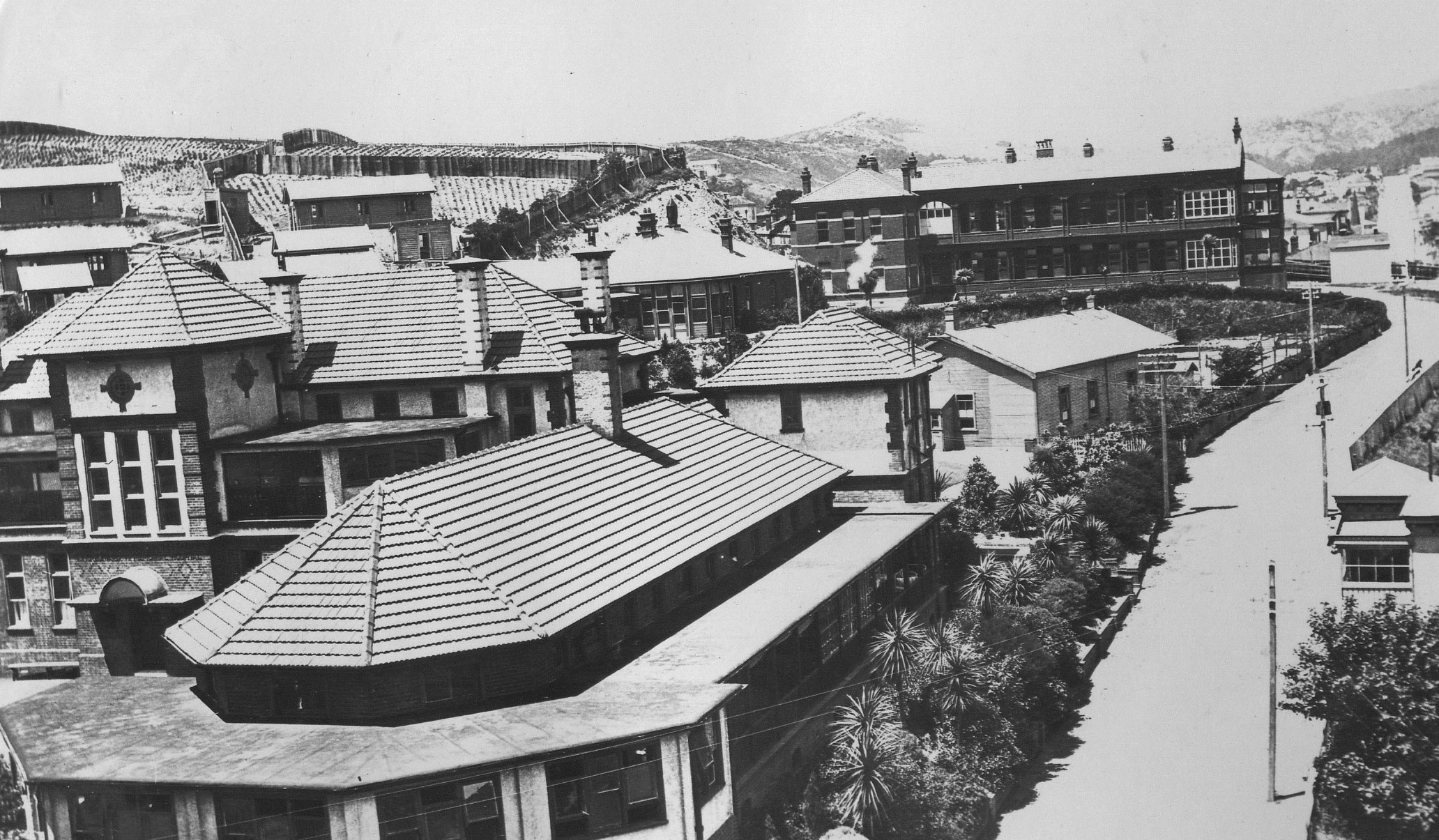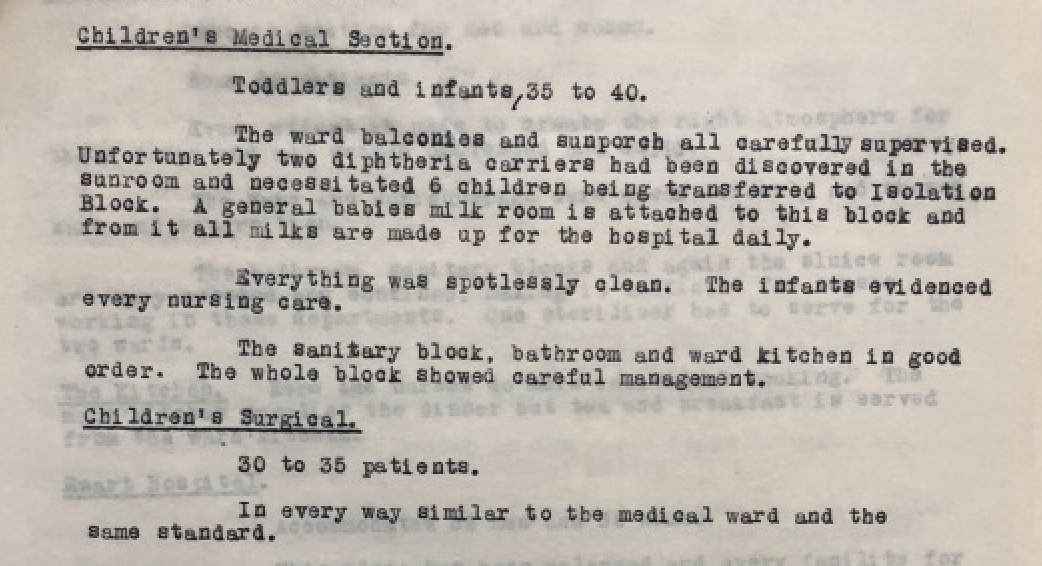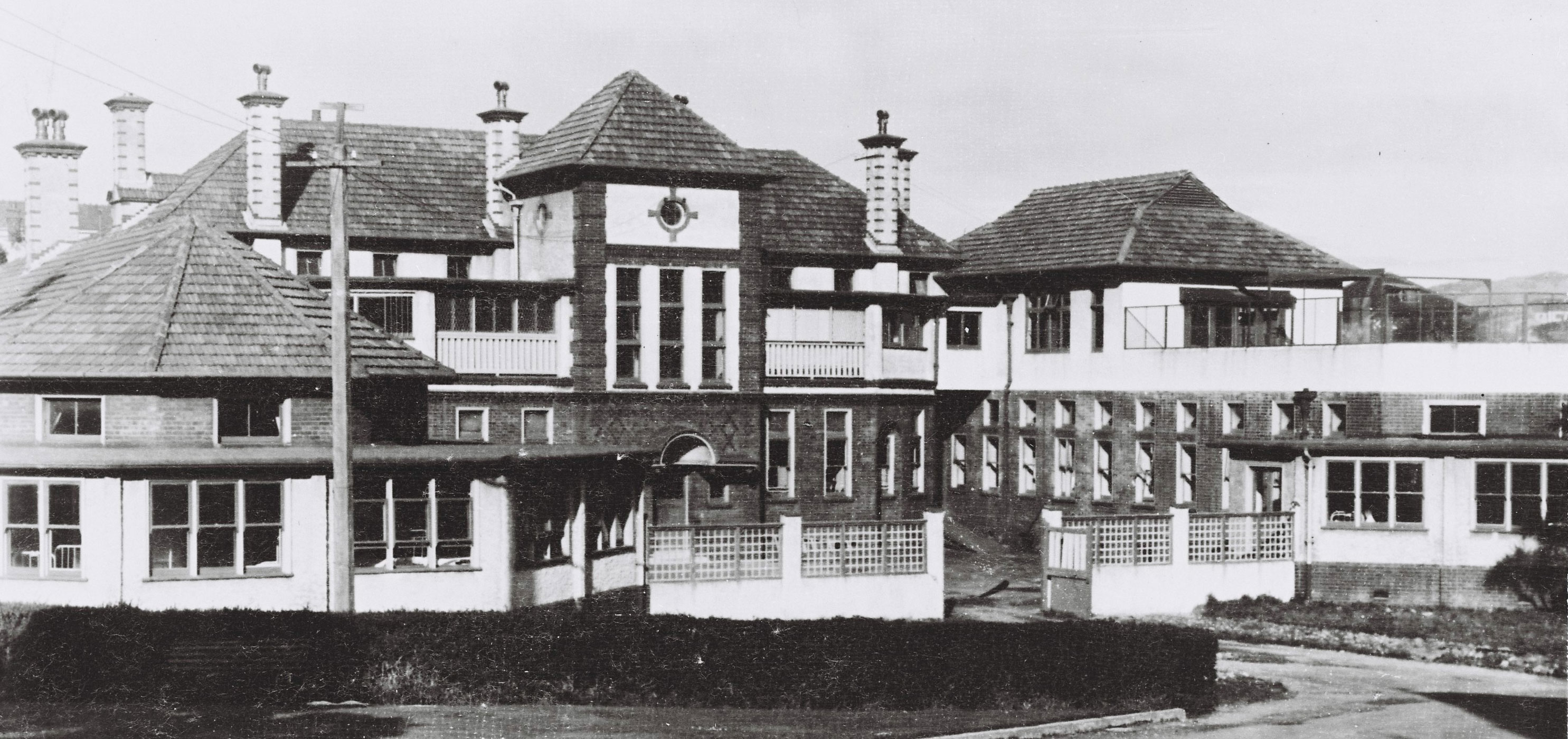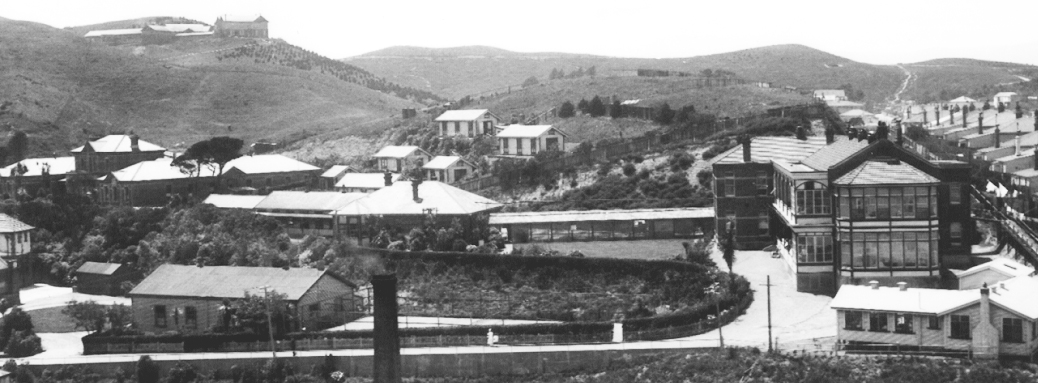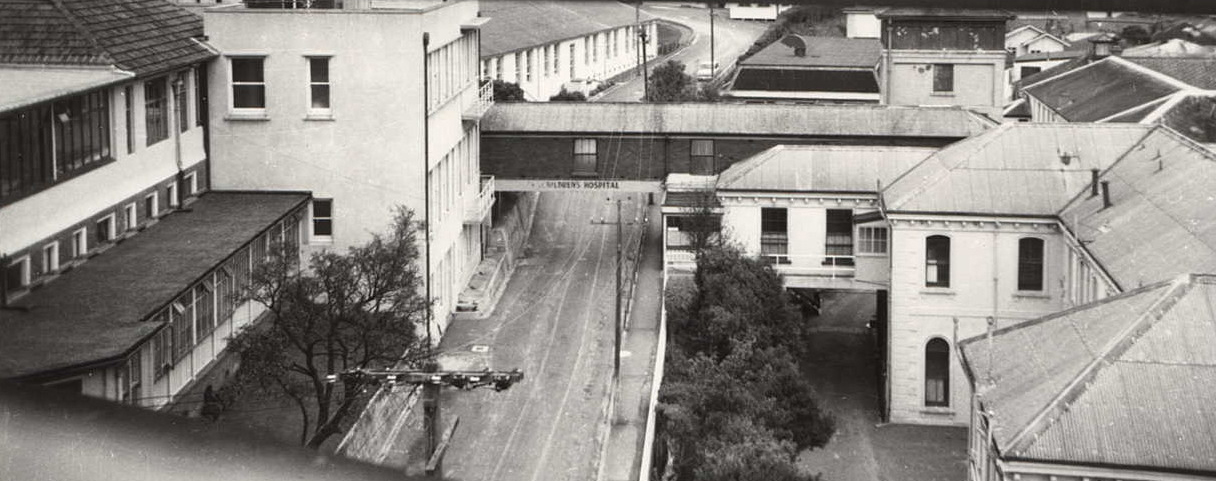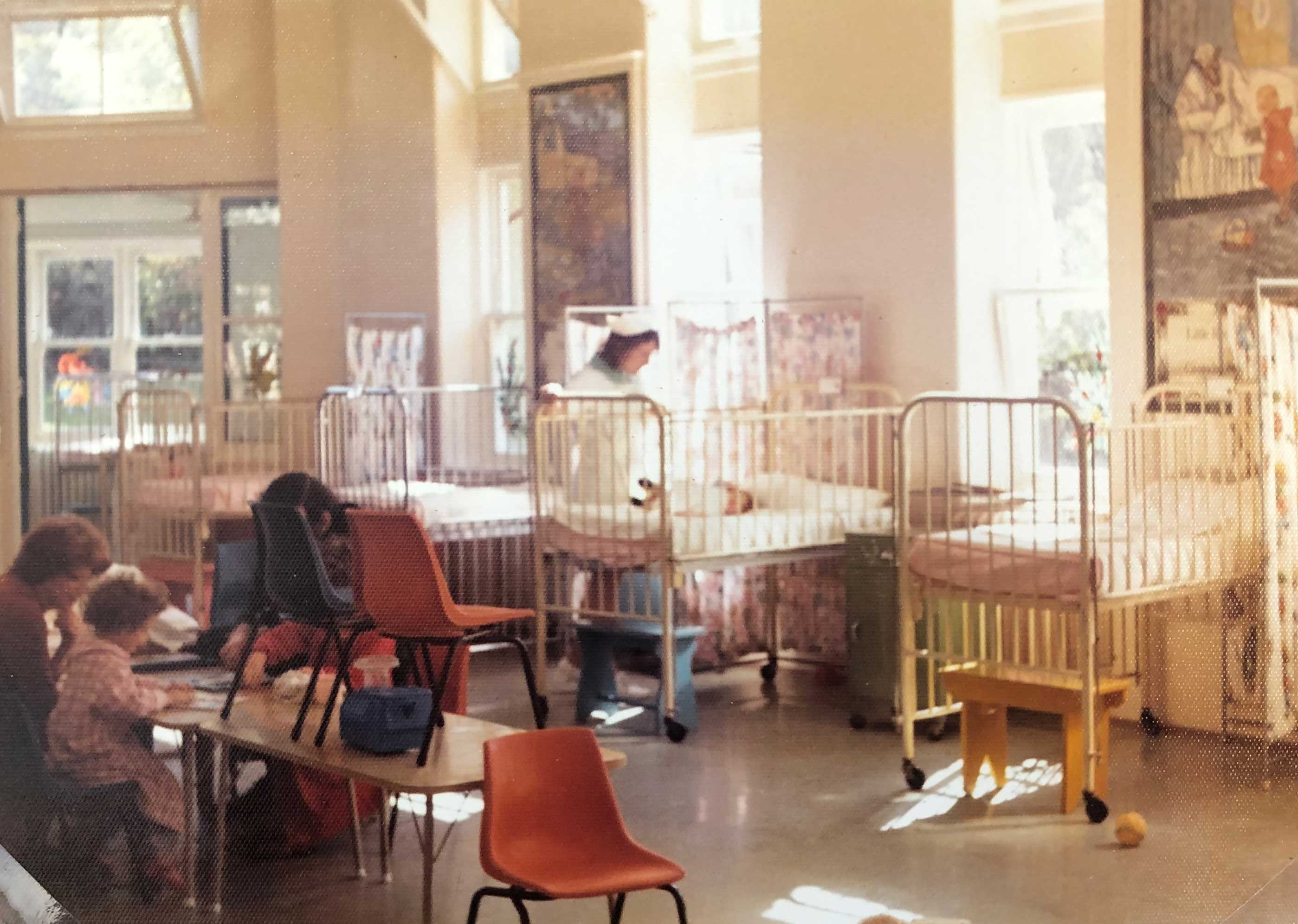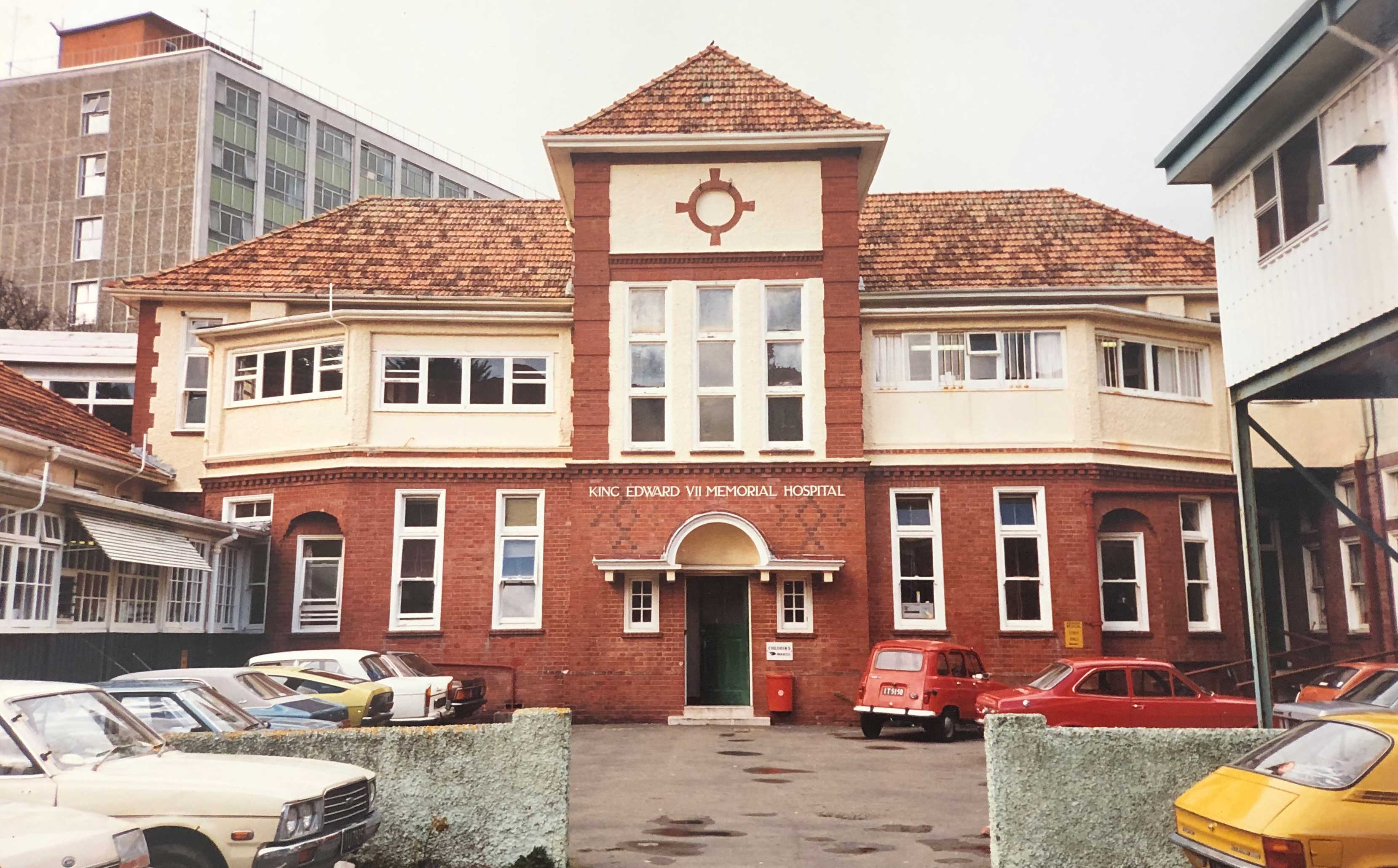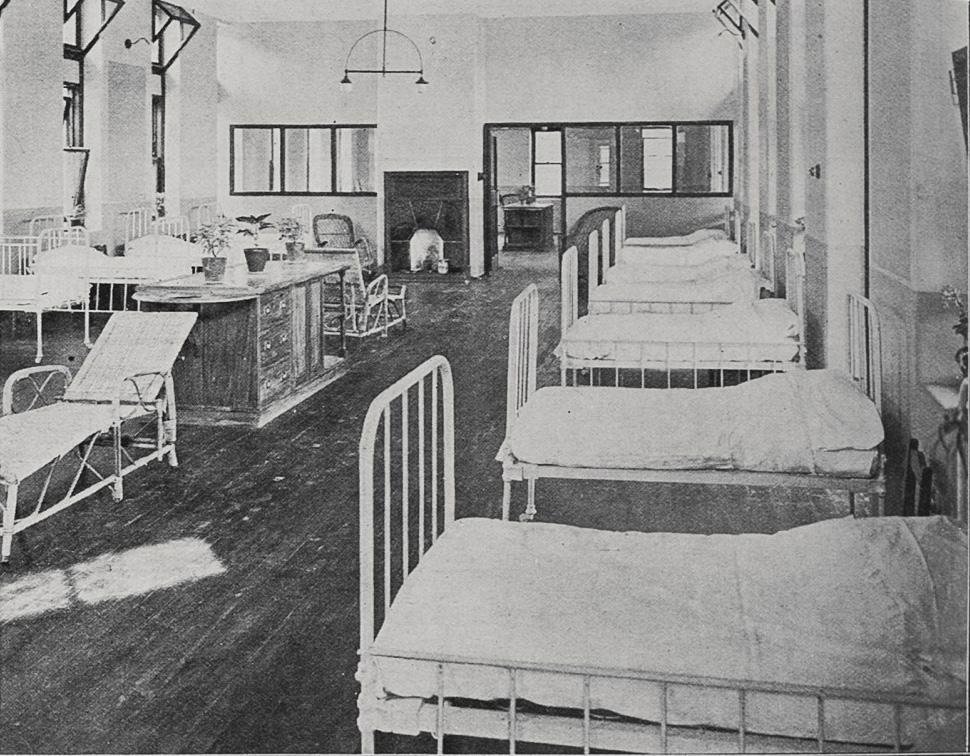
The first children’s hospital
Wellington Hospital’s services for sick children 1912 – 1988 (Part 2): the King Edward V11 Memorial Hospital for Children.

This article is part of a significant collection of historic digital content about Wellington Regional Hospital, providing insights into our history of health.
Plans progress
As the plans for the new children's hospital progressed, building costs were revised upward to around £11,000. A major campaign was launched by the Mayoress, Mrs T M Wilford to raise funds for the building of the new hospital.
The public quickly got in behind this, and major donations were received from various businesses and philanthropists. In particular, Mr Hugh Ward offered to stage a matinee of his vaudeville show at the Opera House, the proceeds to go to the children’s hospital fund. This led to some controversy with objections being lodged by one of the local clergy on the grounds that the show was of suspect moral value. This only increased the enthusiasm of the public to attend the matinee.
In just over one month, £7,269 was raised from all public sources and with Government subsidy, the total fund would reach £16,000. Some of the surplus would be used to install in the new wards the unique Royal Doulton tiles.
On 22 February 1911, the contract for construction was awarded to Messrs. Watts Bros., for the sum of £11,599.
The Evening Post reports on the new hospital for children
The Evening Post reported: “The new Hospital for Children is built of faced brick, with the upper story rough cast in white. Two main wings project in front, enclosing between them a playing court for the children, 70ft by 50ft. The front entrance is reached by crossing this asphalted playground. There is a central corridor, across which is the operating theatre. At each end of the central block are the main wings containing beds for fifty patients. There is a ward over the main entrance to hold twenty two beds, so that the total capacity of the hospital is for seventy-two patients. A feature of the hospital is "the sun room" — a semi-octagonal chamber, at the end of each wing, facing north, so placed that it gets all the sunshine available.
"This illustrates the great tendency of modem curative methods to take full advantage of sun and fresh air. The wards themselves are arranged on similar lines of brightness and sunlight. Each has a subdivision consisting of a light glass partition, so that in each wing there are two rooms, one 51ft by 24ft and the other 32ft by 24ft. Illustrated picture panels of nursery stories will adorn the walls of the ward. The panels are of Doulton ware, and of marvelously pleasing workmanship. On the sunny side of each ward is a verandah wide enough to use as a sleeping place, lightly glassed in as a shelter from wind while it is being used for dormitory purposes.
"The sanitary arrangements are elaborate and complete. Each ward has its own kitchen, and both gas and electricity are to be used for cooking. Coal fires have been installed only in the wards. All the ward windows have fanlights, which can be opened to let in fresh air, but exclude dust and flies by gauze screens. The institution is fitted out with electric light, each ward having, in addition to the usual lights, wall plug points between each bed from which portable hand lamps can be taken, enabling any parent to be attended to at night without lighting up the whole ward and disturbing other patients.
"The kitchens are fitted with electric cooking and water boiling appliances, enabling this work to be done without fumes or smell. The main marble distribution board, fitted in the entrance hall, is of massive construction, and the fittings on it are all nickel-plated and show to advantage under the load light doors. It was designed by Mr. J. Kirkwood. The electric work was carried out by Kirk wood's Electric Lighting Company of New Zealand, Limited, Mr. C. Cook electrician in charge. The architects for the building were Messrs. Atkins and Bacon, and the contractors Messrs. Watts Bros."
- Evening Post, 12 March 1912
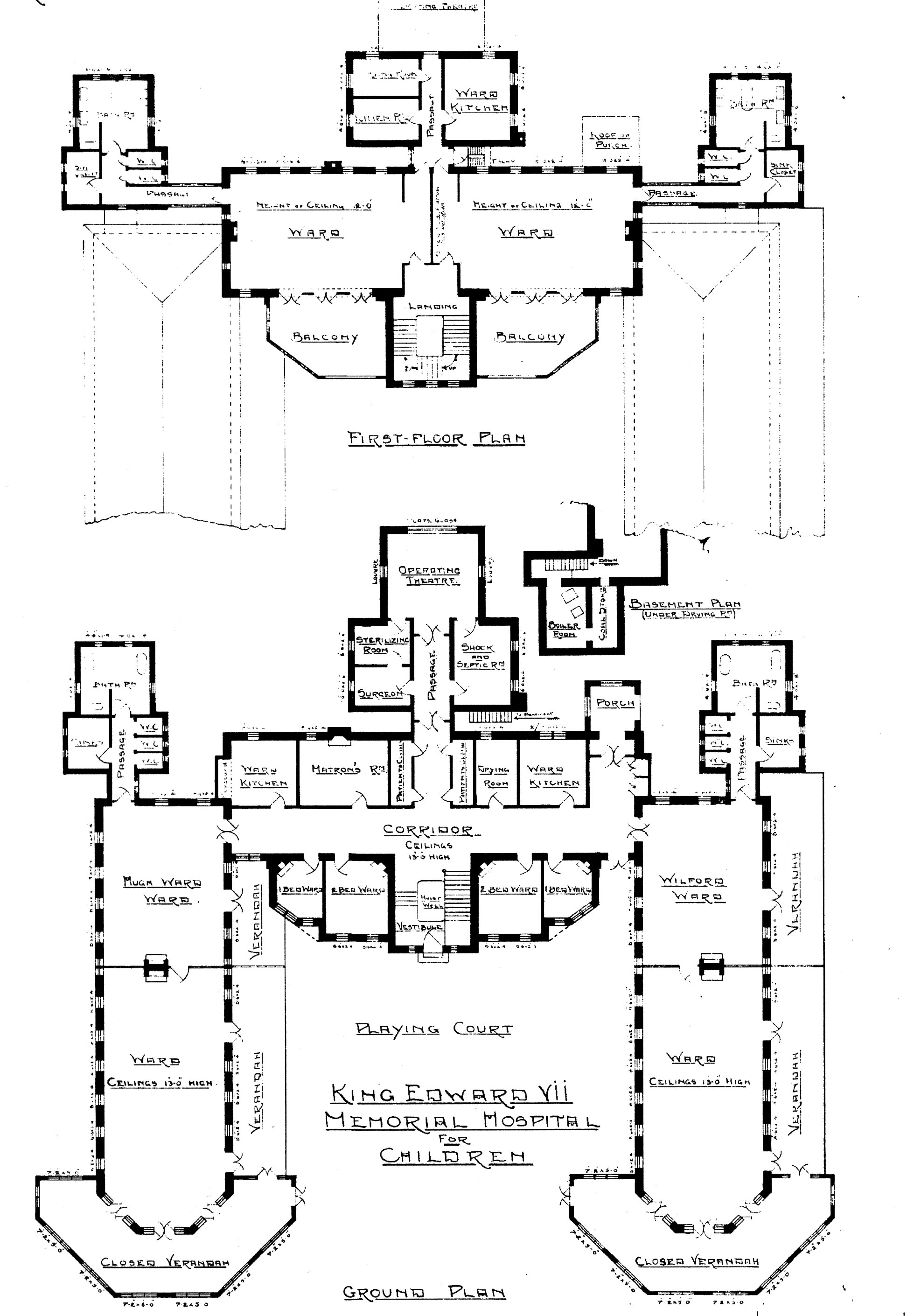
The children's hospital opens
The new hospital, named in honour of King Edward VII, was opened on 13 March, 1912.
In 1915 the Hospital Board agreed to appoint two sisters on the staff of the Children’s Hospital, one for the medical ward and one for the surgical ward. The medical ward appointee would undergo a period of training at Karitane Hospital. Initially, just the two ground floor wards were used.
The two smaller wards on the first floor were vacant until 1916 when they were used temporarily to accommodate Eye, Ear, Nose and Throat patients (pending the completion of their new ward and department in 1917). Later, the upstairs wards were used for children with orthopaedic disorders. The operating theatre had been intended for the children’s surgery but during WW1 it was used for military patients who were housed in the Victoria wards. Subsequently, the theatre was used for a mixture of adults and children with varying conditions.
A connecting corridor
For some years the Children’s Hospital remained disconnected from the main hospital. In 1924 a connecting corridor was erected over the access road to the Victoria wards, and a lift installed.
A Ministry of Health report for 1931 gave full marks for the standard of care provided - see image below.
As part of the Centenary Hospital, initially planned in 1936, provision was made to include two 40-bed children’s wards. This project faltered.
In 1938, concerns were expressed about risks of cross-infection and a need to create isolation cubicles in the children’s wards. Plans were also made to create a sunroom and a school room, and to make additions to the operating theatre area. There were delays because of the war, but in 1941 patients from Children’s Medical were transferred to Ward 5 so that the roof of Children’s Medical could be removed. This allowed the erection of a school room and a sun deck on the roof. These were completed in 1943.
Overcrowding, additions, and alterations
Overcrowding in the children’s wards had become a major problem in the 1940’s. The average daily occupancy in 1943 was:
Ch. Medical 38—61 (peak 72) - normal bed numbers 22
Ch. Surgical 29—47 (peak 58) - normal bed numbers 22
Ch. Orthopaediatrics 14—36 - normal bed numbers 20
There were no single bed wards or cubicles and the service rooms were inadequate. Remodelling finally got underway in 1949, including installation of a new milk kitchen based on the Great Ormond St model.
Additions and alterations to the Children’s Theatre began in 1951. During the reconstruction work in 1949—1953, patients were temporarily housed in old wards 2 and 4.
With the additions and alterations finally complete, the problem of overcrowding remained. This was compounded by the conversion in 1963 of the solarium into an area for Psychiatric out-patients and offices. This state of affairs would remain until the Psychiatric building opened in 1973.
From 1965, the upper floor of Victoria Hospital was used for paediatric patients who could not be accommodated in either ward 18 or 19. In 1970, a portion of the first floor area of the Children’s Hospital was converted into an extra children’s ward—initially designated Ward 20 and later Ward 17.
Prior to 1972, premature babies were housed in the Premature Room in the Maternity Annex. In that year, alterations resulted in the first NNU which remained in use until the Women’s Hospital opened in 1982.
A major hospital rebuilding plan developed in the late 1960’s early 1970’s included provision for totally new wards for children and associated services. These were to occupy levels E & F in each of two ward blocks (2 & 4) facing Riddiford Street. However, a radical downsizing exercise followed with the consequence that blocks 2 & 4 were never built (nor were ward blocks 1 & 3 behind). Some strengthening and upgrading of the old children’s wards was undertaken in 1976.
In 1982, it was proposed that two floors in the planned Women’s Hospital be used for paediatrics, but this was not supported by the staff. In 1982—1983 the Minister of Health ordered that a feasibility study be undertaken to determine if paediatric wards could be housed in old wards 11, 12 & 14 (formerly wards 21 & 22). The result was negative. An additional element was the declaration that the hospital was an earthquake risk and needed to be vacated by 1986.
By 1984, approval was obtained from the Ministry of Health to plan a new Children’s Hospital. By then, the King Edward VII Memorial Hospital for Children was grossly inadequate.
This article is part of a significant collection of historic digital content about Wellington Regional Hospital, providing insights into our history of health. It was gathered by Ron Easthope, honorary archivist and retired cardiologist at Wellington Hospital.
Discover more:
Read the introduction about this archival content featuring Wellington Hospital’s history.
Find out more about accommodation for student nurses at Wellington Hospital in times gone by.
Read about historical nursing teaching facilities at Wellington Hospital.
Discover more about student nurses at Wellington Hospital in decades gone by, including a history of ‘wastage’.
Read a selection of historical nurse recollections from Wellington Hospital.
Find out about the matrons of Wellington Hospital during its early history.
Discover the history of Thorndon Hospitals and the first colonial hospital.
Explore the history of the first Newtown Hospital.
View the early expansion of Wellington Hospital.
Discover Wellington Hospital’s services for sick children 1886 – 1912 (Part 1): before the building of a children's hospital.
Find out about the history of specialist dental services during the early years of Wellington Hospital.



